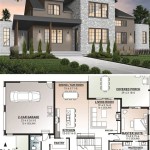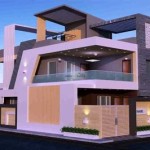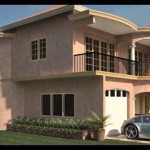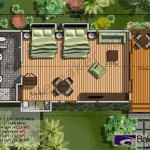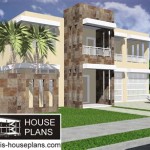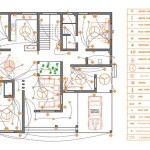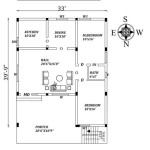```html
Waterfront House Plans: Designing for the Water's Edge
Waterfront house plans represent a specialized domain of residential architecture. They require careful consideration of factors beyond those typically involved in designing homes on standard plots. The dynamic interplay of water, land, and environment demands a comprehensive approach encompassing structural integrity, aesthetic harmony, and adherence to regulatory guidelines.
The allure of waterfront living stems from the scenic vistas, recreational opportunities, and the overall tranquility the setting provides. Successfully translating this vision into a structurally sound and aesthetically pleasing home necessitates a thorough understanding of the unique challenges and possibilities inherent in waterfront construction.
Key Considerations for Waterfront House Plans
Several critical aspects distinguish waterfront house plans from conventional residential designs. These elements directly influence the structural stability, livability, and long-term value of the property.
Site Analysis and Environmental Factors: A comprehensive site analysis forms the cornerstone of any waterfront house plan. This analysis must extend beyond traditional parameters to include detailed assessments of soil composition, water levels, tidal patterns (if applicable), and potential for erosion or flooding. Understanding the prevailing wind direction and intensity is also crucial for designing effective windbreaks and optimizing natural ventilation. Furthermore, the impact of sunlight reflected off the water's surface necessitates careful consideration of window placement and shading strategies to minimize glare and regulate indoor temperatures. Environmental regulations pertaining to shoreline protection, wetland preservation, and stormwater management are paramount and must be integrated into the design from the outset. Failure to comply with these regulations can result in costly delays and modifications.
Structural Integrity and Foundation Design: The foundation of a waterfront home bears the brunt of the environment's variable forces. Unlike inland foundations, waterfront structures often contend with higher moisture levels, fluctuating water tables, and the potential for wave action or storm surges. Consequently, foundation designs must be robust and resilient. Options range from traditional concrete slabs to elevated pile foundations, with the optimal choice depending on the specific site conditions and the level of risk associated with flooding and erosion. Pilings, for instance, lift the habitable space above the reach of floodwaters, providing a significant measure of protection. Material selection for the foundation is equally critical. Corrosion-resistant concrete and treated wood are often employed to withstand the prolonged exposure to moisture and salt. Proper drainage systems are also essential to divert water away from the foundation and prevent hydrostatic pressure buildup.
Material Selection and Durability: The harsh marine environment demands materials that are exceptionally durable and resistant to the corrosive effects of saltwater, wind, and sunlight. Traditional building materials may not be suitable for waterfront construction without specific treatments or modifications. Pressure-treated lumber, composite decking, and marine-grade stainless steel are common choices for exterior elements. Roofing materials must be able to withstand strong winds and heavy rainfall. Impact-resistant windows and doors provide added protection against storms and debris. The selection of interior finishes should also consider the potential for moisture intrusion and humidity. Mold-resistant drywall, waterproof flooring, and durable paints are ideal for minimizing the risk of damage and maintaining a healthy indoor environment.
Designing for the Waterfront Lifestyle
Beyond structural considerations, waterfront house plans should prioritize the unique lifestyle opportunities presented by the location. This involves maximizing views, creating seamless indoor-outdoor transitions, and incorporating features that facilitate water-based activities.
Maximizing Views and Natural Light: One of the primary motivations for choosing a waterfront property is the access to panoramic views. House plans should be designed to capitalize on these views from as many rooms as possible. Large windows, strategically placed balconies, and open floor plans can create a sense of connection with the water. Orientation of the house relative to the sun's path is important for optimizing natural light while minimizing glare and heat gain. Overhangs, awnings, and tinted windows can help control the amount of sunlight entering the home. Careful consideration should be given to the privacy of the occupants, balancing the desire for expansive views with the need for seclusion. Landscaping can be used to create natural screens and buffer the house from neighboring properties.
Creating Indoor-Outdoor Connections: Seamless transitions between indoor and outdoor spaces are essential for enhancing the waterfront living experience. Decks, patios, and screened porches extend the living area and provide opportunities for relaxation, dining, and entertaining. Sliding glass doors and retractable walls can further blur the lines between inside and out, creating a fluid and open atmosphere. Outdoor kitchens, fire pits, and seating areas encourage residents to spend more time enjoying the waterfront environment. The design should also consider the accessibility of outdoor spaces for people of all ages and abilities. Ramps, handrails, and level surfaces can ensure that everyone can enjoy the benefits of waterfront living.
Incorporating Water-Based Amenities: Waterfront house plans often incorporate features that facilitate water-based activities. Docks, boat lifts, and kayak launches provide direct access to the water for boating, fishing, and other recreational pursuits. Outdoor showers are convenient for rinsing off after a swim or water sport. Storage areas for water sports equipment, such as kayaks, paddleboards, and fishing gear, should be integrated into the design. Swimming pools and hot tubs can provide alternative options for water-based recreation. The placement of these amenities should be carefully considered to maximize their usability and minimize their impact on the surrounding environment.
Regulatory Compliance and Permitting
Waterfront construction is typically subject to a complex web of federal, state, and local regulations. Navigating these regulations and obtaining the necessary permits requires careful planning and coordination with relevant authorities.
Understanding Zoning Regulations: Zoning regulations govern the allowable uses, building height, setbacks, and other aspects of development within a specific area. Waterfront properties are often subject to special zoning regulations designed to protect the environment and maintain the character of the waterfront community. These regulations may restrict the size and location of structures, limit the amount of impervious surface, and require specific landscaping measures. It is essential to consult with local zoning officials early in the planning process to understand the applicable regulations and ensure that the proposed house plan complies with all requirements. Failure to comply with zoning regulations can result in costly delays and modifications.
Navigating Environmental Permits: Numerous environmental permits may be required for waterfront construction, depending on the specific location and the nature of the project. These permits are designed to protect sensitive habitats, water quality, and other environmental resources. Common permits include those related to wetlands protection, shoreline stabilization, stormwater management, and wastewater disposal. The permitting process can be lengthy and complex, often requiring detailed environmental assessments and mitigation plans. Engaging with environmental consultants and regulatory agencies early in the process can help streamline the permitting process and minimize the risk of delays.
Coastal Construction Codes and Standards: Coastal areas are often subject to specialized building codes and standards designed to address the unique challenges of waterfront construction. These codes may specify requirements for foundation design, material selection, and structural reinforcement to withstand the forces of wind, waves, and flooding. Compliance with these codes is essential for ensuring the safety and durability of the waterfront home. Building inspectors will typically conduct thorough inspections throughout the construction process to ensure compliance with all applicable codes and regulations.
```
Lake House Plans Waterfront Monster

Aaron S Beach House Coastal Plans From Home

Coastal Home Plans Sater Design Collection

Waterfront Cove Coastal House Plans From Home

Contemporary Waterfront House Plan With Office And Large Covered Porch 871013jen Architectural Designs Plans
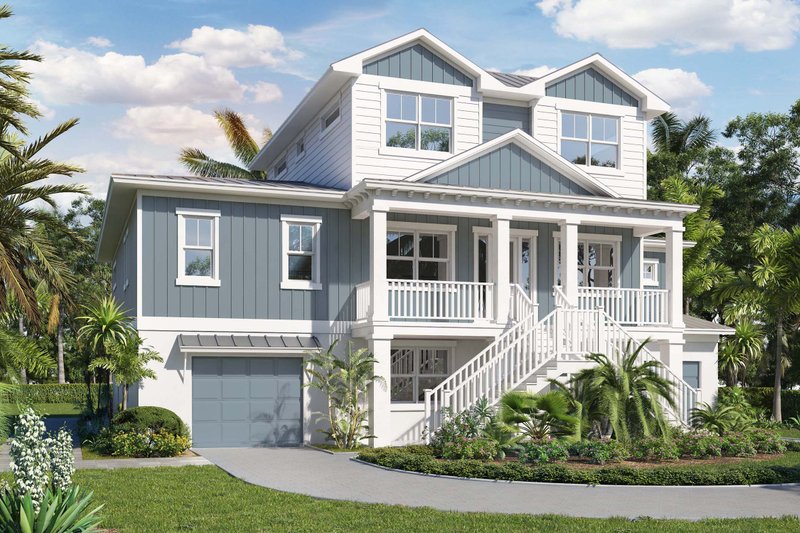
Beach House Plans Floor Designs Houseplans Com

Coastal Home Plans Sater Design Collection

Ultimate Waterfront Home Plans By Design America Inc Paperback Target
:max_bytes(150000):strip_icc()/001-10201280-2-26c4ff2d0a6e48838987d023aa2df39f.jpg?strip=all)
These Top 25 Coastal House Plans Were Made For Waterfront Living

Lake House Plans Floor Lakefront The Designers

